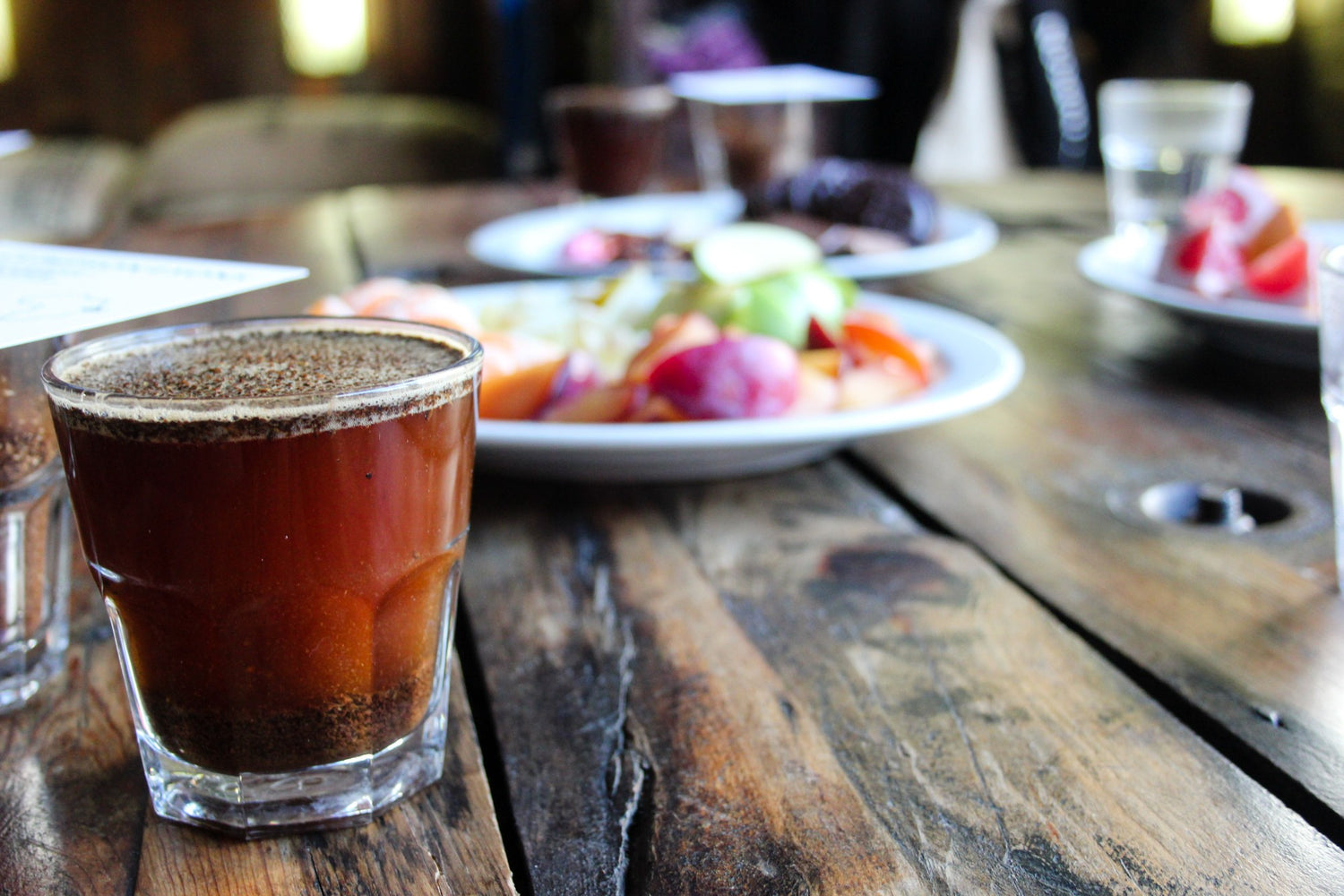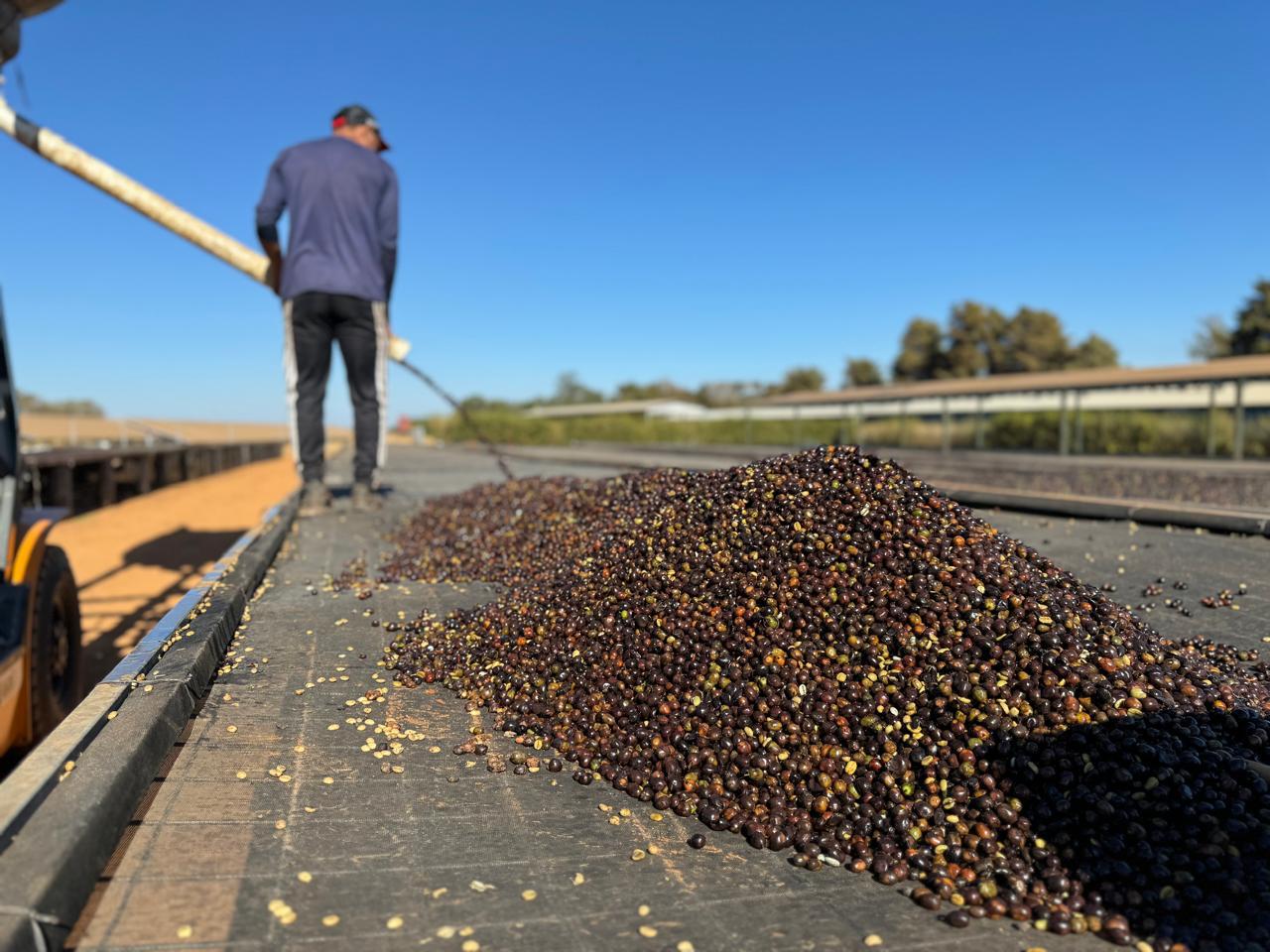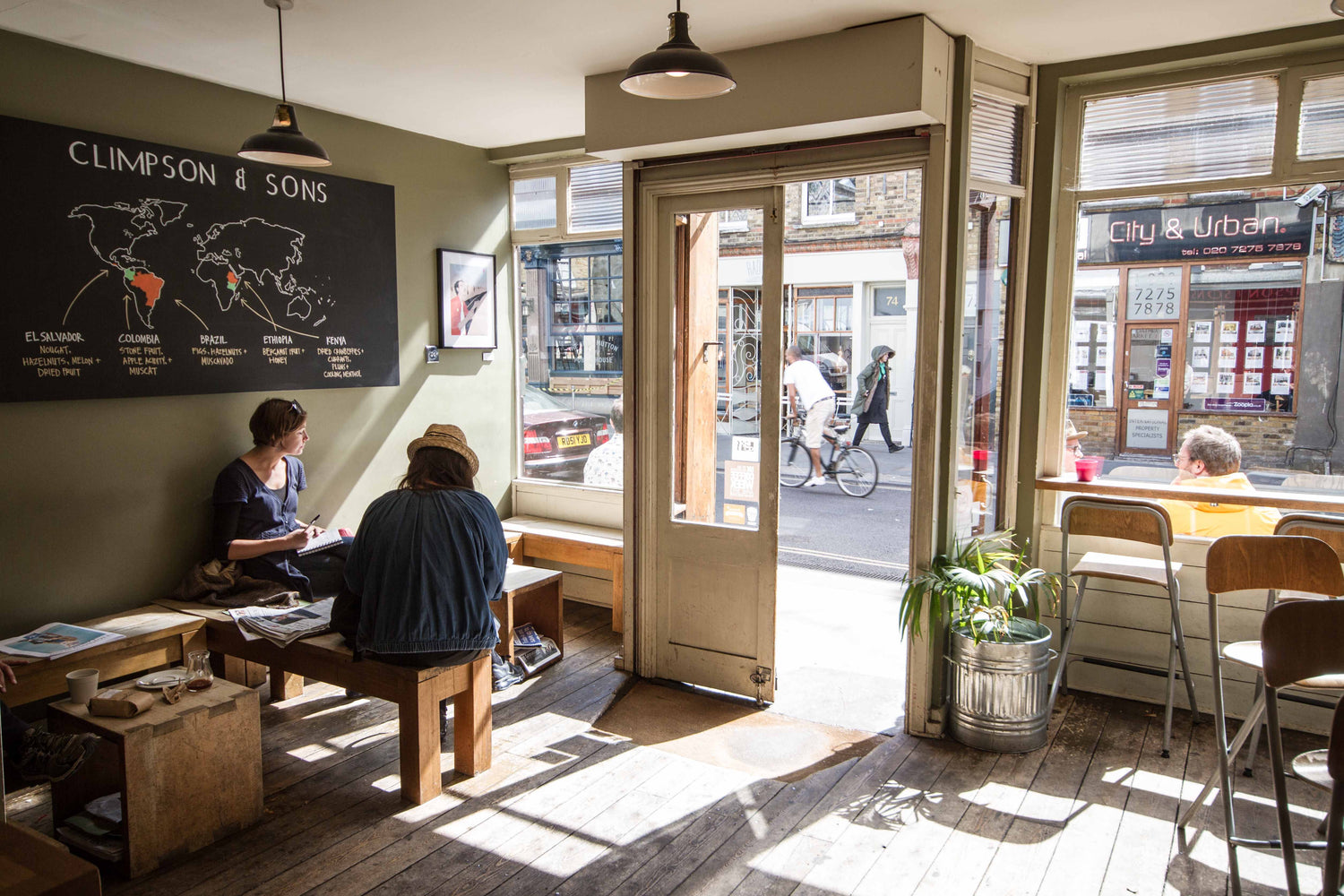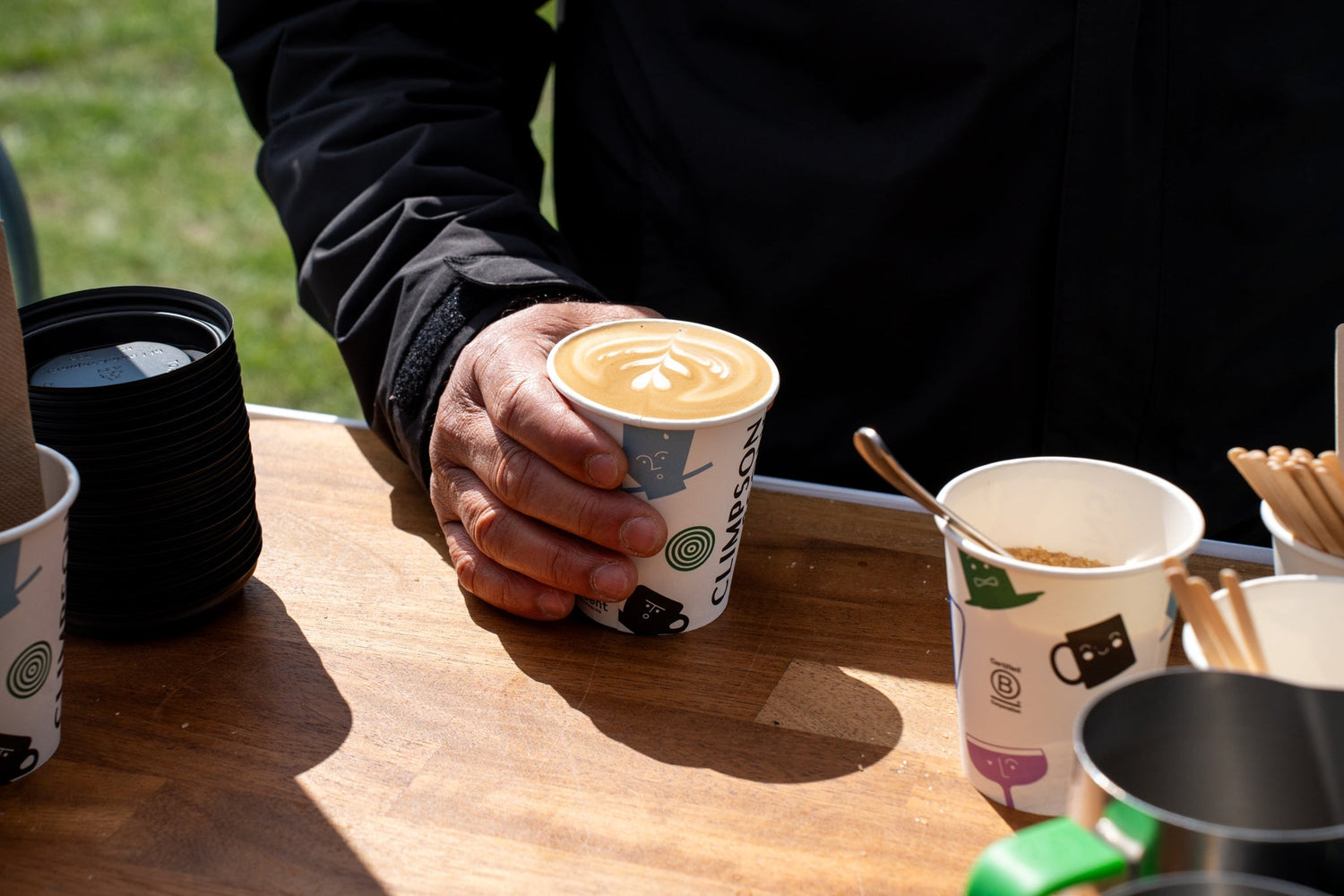By Danny Davies and Daniel Say
We want you to join us on our sensory journey into coffee. We aim more to inspire you and pique your interest here rather than give you the complete detailed picture. For that, we recommend one of the books listed at the end of this, or for an immersive education the SCA Sensory Foundation course. Here though we want to have a little fun, exploring specifically coffee, in the hope you will pick up some of the tasting notes we suggest in our coffee descriptions.
What do we mean by “sensory”? Merriam-Webster quotes “1 : of or relating to sensation or to the senses sensory stimulation. 2 : conveying nerve impulses from the sense organs to the nerve centres”. That makes “sense”! However in the lexicon of a coffee roasting business - and we love short hand and unique terms of phrase, for example “first crack” (early stage of in a coffee roast), “blind cupping” (tasting multiple unknown coffees via slurping off a spoon) - the use of the term “sensory” has proliferated and evolved to describe an entire field of coffee analysis and methods of tasting. We build our “sensory skills” via repeated cupping; we diligently complete sensory analysis forms (usually in software these days). We grasp for terms to describe what our senses experience.
Eventually we become finely-tuned sensory machines and the skills and enhanced awareness spill over into non-work activities. Smelling everything more acutely, making our coffee more precisely at home with bought or home-filtered water, chewing on herbs and spices much to our friends' disgust insearch of understanding a named flavour we haven’t got our head around. Word of warning: you may become obsessed and never again enjoy that commodity-based espresso you bought at the train station for many years as part of your daily ritual. Like us, you may become “coffee weird”.
Some of you may have developed your “palate memory” and sensory skills via wine or food, tea or another obsession. Even without consciously trying, you have been building a mental bank of remembered tastes and aromas, via repetitive tasting and smelling of foods and beverages. The more you pause and think about what you consume everyday, the more this bank will expand and future flavour experiences will be more likely to be stored. Build up a palate “bank” and try to remember how things tasted, long after the compounds left your body. Master sommeliers of wine dedicate hundreds of hours building specific remembered tastes to pass their difficult exam, and the same can be done in the coffee sphere of specific tastes; If you’re looking for a hobby, we recommend starting with the Le Nez du Cafe aroma kit, or attending one of our cupping clubs and listening for the recurring coffee tasting notes; seek to understand them and add them to your palate bank.
Obviously, there are some things that will hinder your developing palate memory but it's worth mentioning that smoking, noisy distractions, poor ventilation and the consumption of strong tasting foods and beverages before attempting to focus on your palate is, well, unhelpful. Let's assume you know that though, so grab a bag of beans, open the window, put on some chilled out background tunes and start filtering some water; make a brew,, ready for some new ideas that could subtly change your daily appreciation of taste and smells, both coffee and anything you imbibe really!
Aroma refers to smells or olfactory and retro-olfactory (aroma compounds travelling from the inside of your mouth into your nasal passage) perceptions, and flavour to the combination of both. You could say “Flavour = taste + aroma” but that's oversimplifying a very complex set of experiences. From the angle of writing tasting notes for you though, we choose “descriptors” or familiar flavours (made up of their unique tastes and aromas) named for their similarity to flavours we detect in the coffee brew.

Cupping Club on how to train your palate
Much scientific literature has been dedicated to breaking down the tasting sense, to both understand the human body and also to fine-tune products (manipulating their structure and production to taste better to humans). As it involves the brain, it's a fairly complex undertaking and as such the use of computer simulation has proved difficult. But they are working on it, and there are various ways that data (which eliminates the subjective variable) can now be used to check or control human sensory experience in tasting. However, computer science is a long way from being able to analyse smell and taste anywhere near as you and I using our old fashioned noses and tongues! So keep the edge and fine-tune those senses, who knows maybe it will be one of the last good forms of employment as robots take over our work.
Jokes aside, our advice to improve quickly as a beginner is to create consistency in your work, by using scales for your measurements, by using a journal rather than just relying on your memory (sorry), and learning about and investing in good coffee equipment. A basic thermometer is really useful to have on hand. Look after your nose, mouth and brain. There are a couple of tools, such as a colour spectrometer for roast colour analysis (definitely not needed for home) and the coffee refractometer (which gives you a reading for coffee “body”, more on that soon) that roasting professionals use regularly, but basically YOU are the best sensory analysis tool. You just need some fine tuning, so read on.
Coffee sensory time. The tongue is the main organ for tasting and the nose for smelling aromas, but they tend to get all the credit in the over-simplified models that have been around for years (the tongue map for tasting). But wait, there's more. You are equipped with a hard palate and a soft palate in your mouth, the result of millenia of evolution and basically super useful for functions such as breathing and talking ( the hard palate is the front part of the roof of your mouth, soft the back) and there are taste receptor cells (commonly referred to as taste buds but are scientifically known as gustatory cells or papillae) throughout, and also in your cheeks and throat. So let go of the map and try to sense with your whole mouth.
So using your tongue, you can detect a range of taste “elements”. The easiest way to fine-tune this is to work with isolated examples of each taste. The five basic taste elements are sweetness, saltiness, acidity, bitterness and umami (or savoury). We will look at each of these elements below, and suggest a simple, low-cost exercise to help you fine-tune your perception for each.
But let's point out that scientists (and by extension, humans) are discovering more distinct taste elements. Just to round out our knowledge, let's take a quick look. Oleogustus, or the unique taste of fat, is one of the main “new” elements being discussed, though not massively useful or apparent in coffee tasting (except perhaps for full fat milk latte cuppings!). Kokumi, “mouthfulness” or “heartiness” has been isolated as a taste from the same people that popularized umami a few years ago. Again not really useful in the coffee world, but hopefully part of your non-coffee world! Piquancy, spiciness or our “molecular thermometer” is one of our favourites outside of work, and relates more to our tongue's sense of touch, detecting heat. Conversely, coolness is now considered a taste too, for example the cooling taste of mint leaves. Temperature sensing is of course part of coffee tasting and it's useful to note that coffee (and anything) will present flavours to different levels depending on temperature. Hence the thermometer in our recommended tools above. But we digress.
This article is all about taste but of course there's smell, the sense where we isolate those precious and elusive aromas. We will separately write about this whole facet in relation to coffee sensory analysis. The olfactory nerve is responsible for this experience in your brain, the olfactory receptors (located in your nasal cavity) detect and deliver aromatic perceptions. These are vital for coffee tasting. Remember our simplified formula above? Without aroma, the full picture of flavour is only half perceived. As mentioned above, we recommend investing in an aroma kit if you want to get a bit more serious about coffee aromas. A basic exercise to illustrate the power of our sense of smell is to take some mint leaves, and hold your nose before popping in your mouth and chewing for a bit. Then let go of your nose. You're welcome.
Back to our main 5 taste elements. Let’s start with acidity which features frequently in coffee sensory assessments. Without any acidity at all, coffee tastes quite flat and boring. The “mouthfeel” of the coffee just isn’t right. The fruit-tastes we often list in tasting notes are part aroma, part sweetness and definitely part sharpness from the natural acidity in the coffee. So how can you learn to detect (and eventually differentiate acids in coffee? We suggest you start with a general acidity appreciation session: just buy a bunch of different fruits and line them up, passing from one to the other and back again, dwelling on the mouthfeel and acidic taste sensation. Try to include some orange for citric acid and some grapes or green apple for malic acid, but a general appreciation is what you are aiming for here so throw in some blueberries and strawberries. Think about what you are tasting and try to “store it in your palate bank”. Take a break, then once your palate is reset you can then make a filter coffee brew (accurately, ie to a recipe) and again focus on the acidity of the coffee when you slurp it into your mouth (try make a noise by sucking air through to aerate the coffee; trust us this helps!). This fairly subjective exercise is nice done with a friend which should highlight the individual differences in perception. We’ve done this in our training sessions for years to grasp the overall concept of acidity, but when we have a more expert level of trainees we like to line up acid solutions to really hone in on which type of acids you can taste in coffee. Sign up for an SCA Sensory Foundation course for that one!
An important aside, just quietly, from the coffee roasters desk to you, the budding coffee taster. For some, any talk of acidity conjures up palate memories of “sour” taste experiences. Sour by definition is an excess of acidity. It seems to also be a word used by many to wrongly describe the unpleasantness in some of the darker roasted coffees we come across every day. We also think (or hope) your palate will adjust to the higher acidity in higher quality arabicas. The “excessive” acidity effect known as sour is still considered one of the taste elements in general taster education.
Sweetness is for many the star of the show. We love it when a coffee is brewed correctly and shows all its sweet flavour associations. There are ways to improve your ability to detect sweetness using everyday items. Grab 2-4 same sized glasses, some caster sugar and a teaspoon. Make a sweet solution of 1 teaspoon of sugar dissolved in warm water, and another with half a teaspoon. Put some type of mark on the bottom of the stronger one and make a note which is which in your journal. Taste, mix them around (great with another person so they can tell you which one is which), taste and mix them around again. Focus! You can add another higher and/or lower concentration glass to the exercise. You are looking to see how low you can go in sugar concentration before you can no longer taste the sweetness, as well as whether you can correctly order the descending sweetnesses. Again, take a break, make a brew, and focus on sweetness in the cup. Let’s see if you can improve your sweetness detection powers!
Ok, bitterness. It's fair to say bitterness gets bad press, and the perception of this taste has protected humans and many animals over millions of years from toxic plants. As we are no longer cave dwellers, but are obsessed with fine-tuning our tasting skills, no wonder we are confused. Kale? Tastes bitter. Dark chocolate. Bitter. Caffeine itself? Very bitter taste. Our suggested exercise to begin appreciating bitterness may leave you slightly wired. Buy a couple of bars of chocolate, same brand but different % cocoa. Try get a 100% bar too. Break off little pieces of each and again make a great brew of caffeinated coffee, as well as a decaf coffee. Taste both the chocolate pieces and the two coffees in descending and ascending directions, “washing” down the chocolate residue in your mouth with the warm coffee. Whilst there will be a sweet sense from the sugar contents, “tune in'' to the bitter taste using the 100% cocoa (or highest) chocolate piece to benchmark the bitterness. Also note the effect of the coffee after each different % piece. The decaf will be contrastingly lower in bitterness to the caffeinated brew. You could achieve bitter-detection greatness without the chocolate, using just the coffees, but that wouldn’t be as fun.

Saltiness time. A similar exercise to the sweetness one above, using table salt in equal measurements, will improve your saltiness discovery and you may find your threshold level at which you stop detecting saltiness to be higher or lower than the sugar concentration. This will vary from one person to the next. One reason to do this is to learn your own tasting strengths. Otherwise though, you won’t taste a lot of saltiness in our coffee, so consider this section good for your general sensory improvement - and you may begin to put less salt in your meals.
Umami in coffee? Glutamic acid, made famous by the global fascination with MSG, appears in coffee beans, and is defined by a sense of “savouriness”. Common foods include tomatoes, parmesan and marmite, as well as fermented soy products like miso and dried seaweeds such as kombu (big in Japan). An exercise in umami-detection would be to take a few of those foods and eat them whilst thinking about umami! Basically make a high-ummai lunch on us, with some plain bread to contrast and cleanse your palate. It's unlikely you will pick up much umami in the filter coffee you wash the lunch down with, but do it anyway. Your friends will be impressed if you know how to use and highlight umami-heavy ingredients. By the way, South Pacific coffees are supposedly higher in umami, such as from Papua New Guinea, but that hasn’t been our consistent experience thus far. Our Myanmar Ywangan definitely showed some umami for a recent example.
Now to our final point today: there is more to understand than just the basic tastes. We will leave with you two important sensory concepts: body and balance. Balance is the easier of the two to grasp, being the “right” amount of all the taste elements and body (next paragraph). No harsh flavours, all flavours working together to create a harmonious taste experience. Our roasters aim to create balance in the cup through sample roasting and rigorous tasting to get to the right roasting curve (the controlled time/temperature of a roast). To get an idea of balance, buy some coffees you wouldn’t normally drink, let’s say some mainstream big-name “commercial” coffee, and taste against a bag of Climpsons! The more balanced coffee will be pleasing, showing sweetness and fruit acidity, perhaps some cocoa bitterness but nothing “poking out”, nothing harsh and distinctively unpleasant. It will make you want to drink more of it.
And lastly, but certainly not least, body. Not a taste technically but an important sensory concept. Body is the tasters word for the viscosity of a beverage. How thick is the liquid? Water is the lightest-bodied beverage, and think of something like treacle for the heaviest. We look for a sense of body in well-made coffee. Espresso is naturally higher in body as it is far more concentrated than say filter coffee. The organic compounds, or dissolved solids in the brew (including coffee oils) make up the body and vary from coffee to coffee. If you have some xanthan gum in the cupboard, dilute some in water and taste against a glass of plain water. The sense of thickness in the xanthum liquid makes it the “higher bodies” beverage. Simple and effective. We tend to favour higher bodied coffees in our selection process but for a Climpsons example, contrast our Brazil Esperanza when it is in season for higher body against any other origin we have in our range at the time.
Well you have a lot of homework frankly. Come back when you have made some progress and check out our next instalments! And extra for experts, please read from Dan’s selection below.
Happy tasting
___________________________________________________________
Daniel Say’s Recommended Reading
Sip’n’slurp - Frey Yuan
Coffee: A Modern Field guide - Matt North
The Flavour Thesaurus - Niki Segnit
The World Atlas of Coffee - James Hoffman
Real Fresh Coffee - Jeremy Torz and Steven Macatonia



